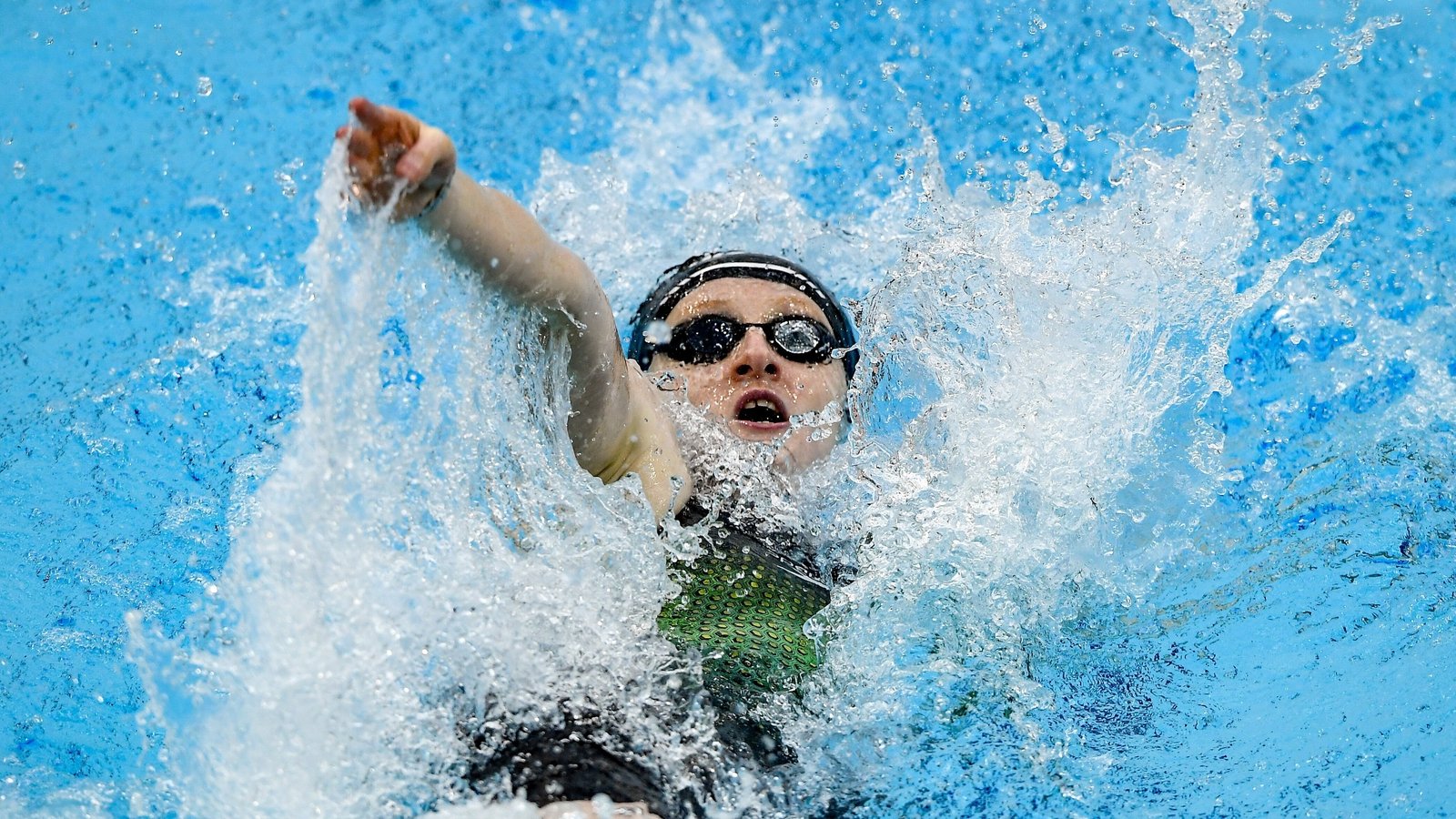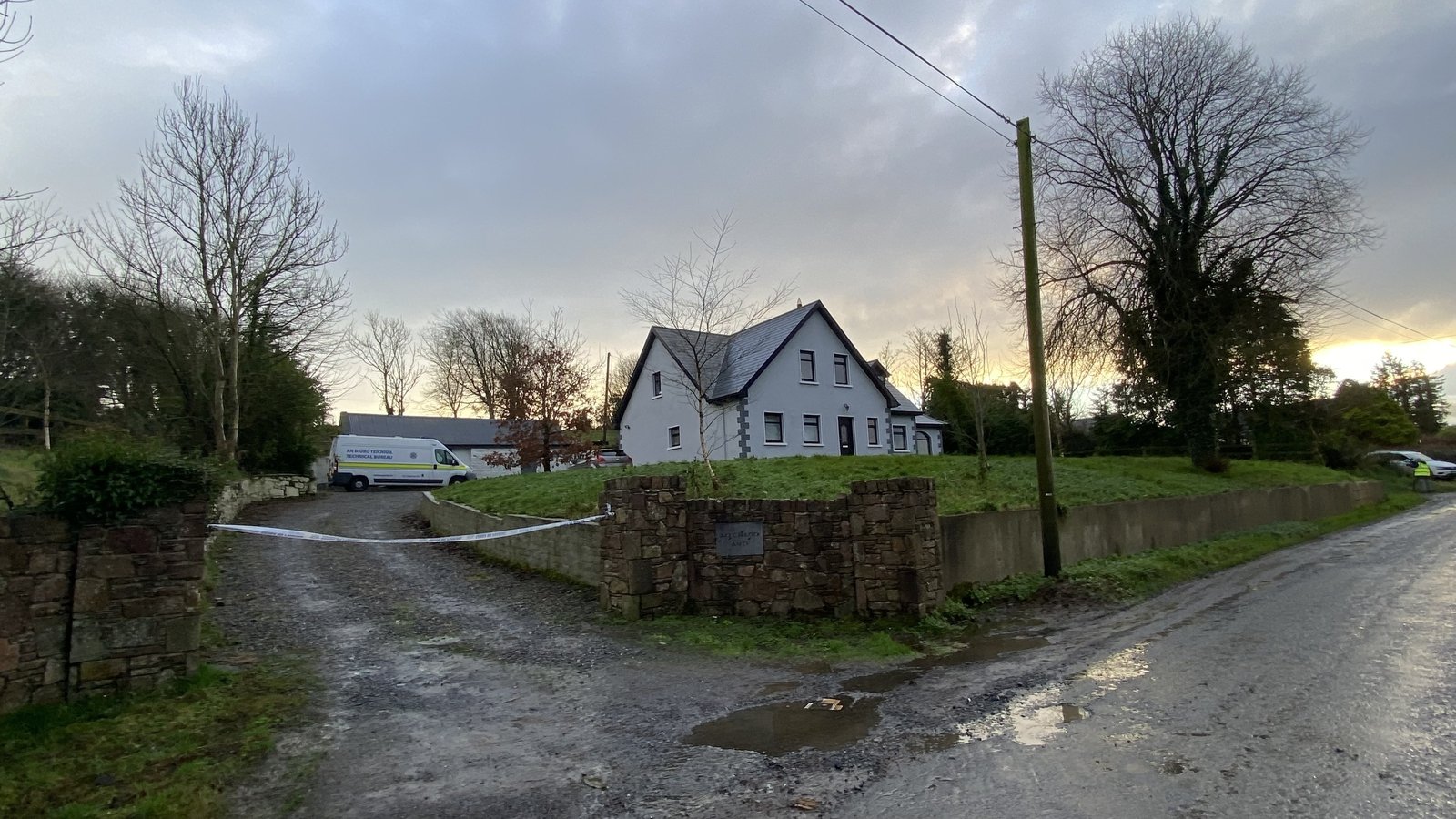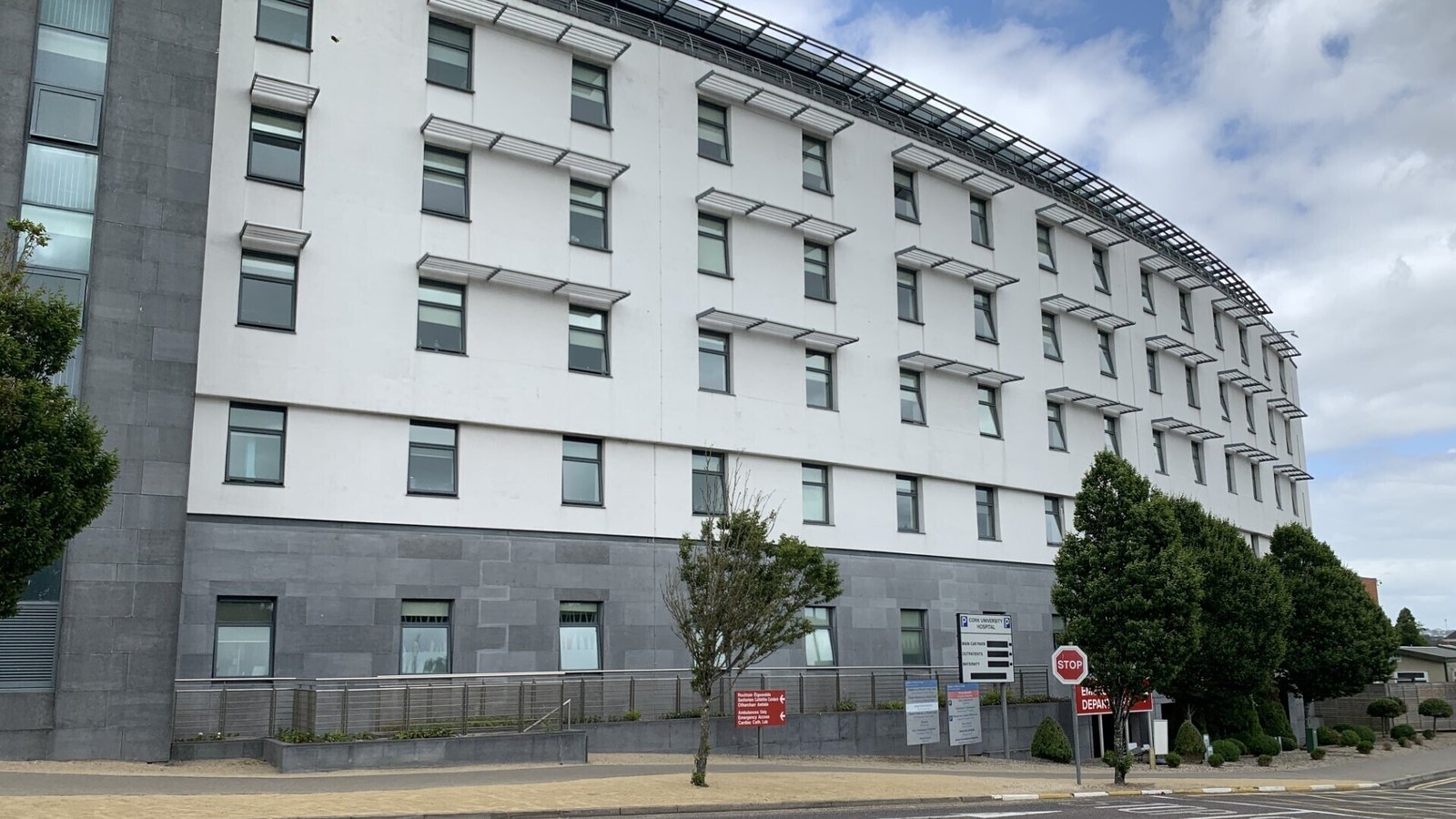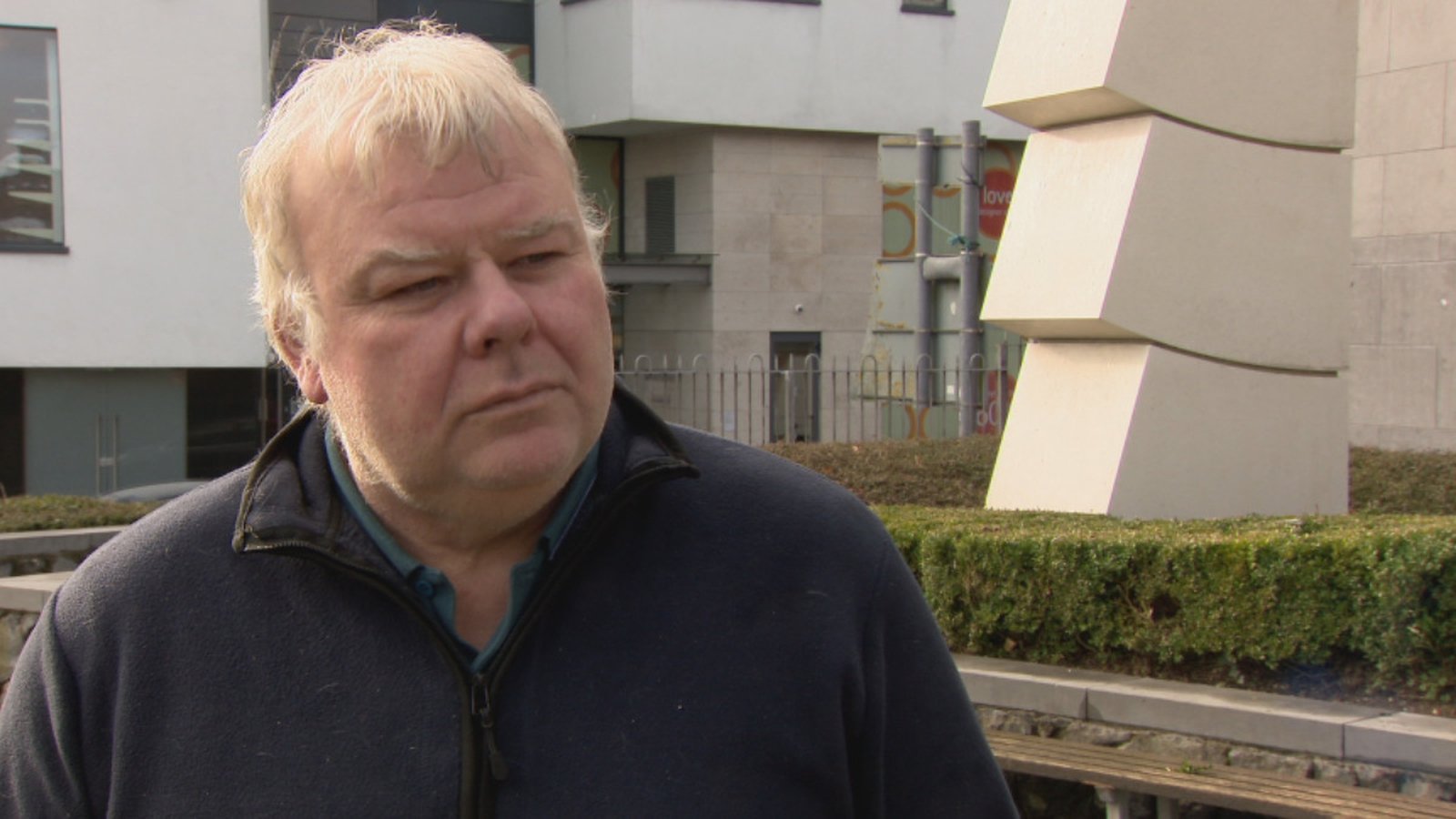Ukrainian children in warm embrace of west Clare
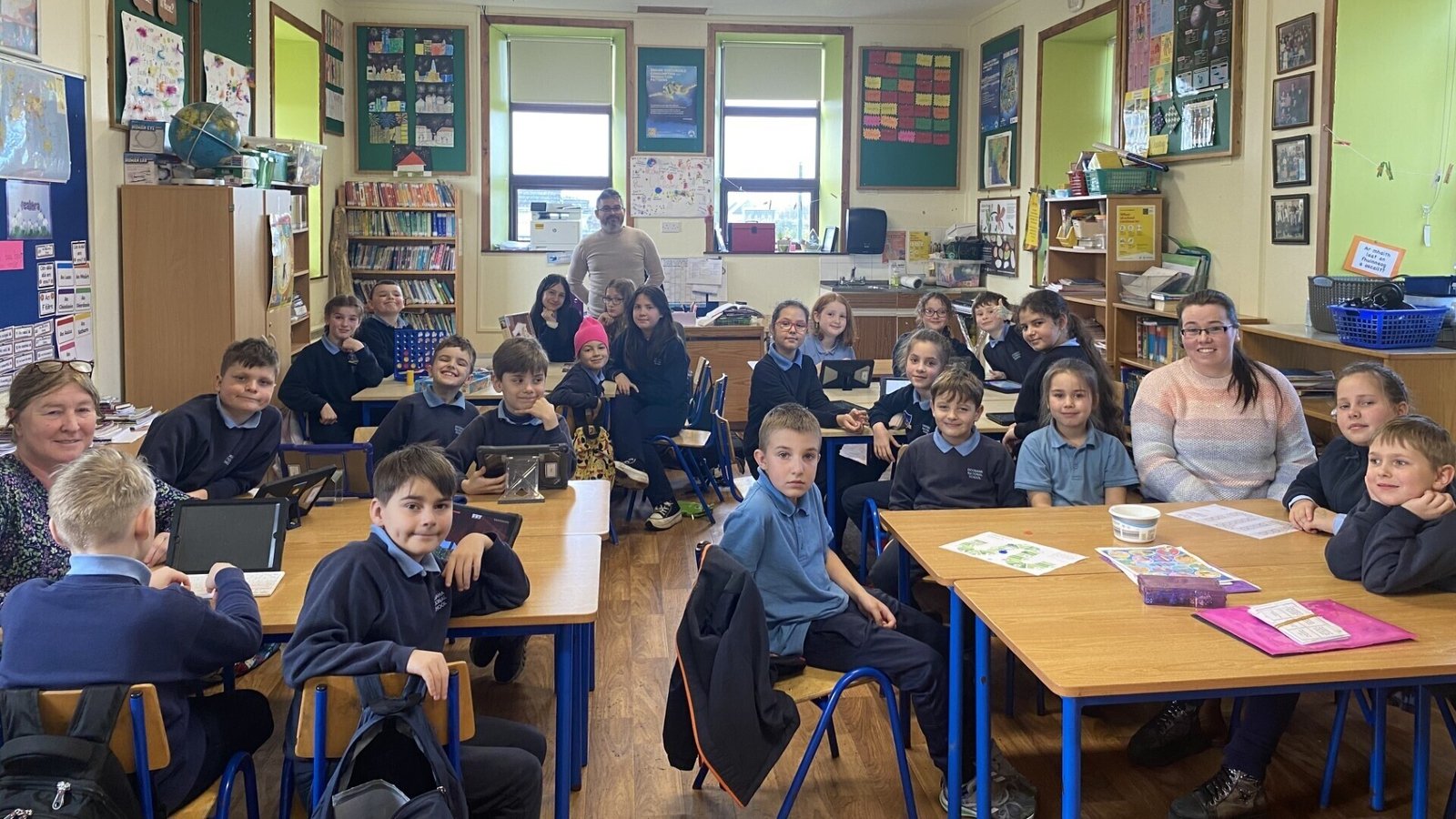
This week RTÉ News is carrying a series of reports across digital, radio and television looking at the situation in Ukraine two years after the Russian invasion.
On a wet Tuesday morning Doonaha National School is a snug and welcoming hive of activity.
Twenty-five children attend school here. It is like so many other very small schools except perhaps for one thing.
The dominant hum of chatter during breaktime is definitely not English, or Irish, its Russian and Ukrainian. There’s maybe a little bit of Polish in there too.
There are an estimated 300-340 Ukrainian refugees living in the nearby town of Kilkee.
Most of them are living in a former hotel in the town. They first arrived on St Patrick’s day two years ago.
The town’s overall population is 1,200. So one in four of this west Clare town’s inhabitants is now Ukrainian.
In a part of the country long blighted by rural depopulation their presence has transformed local schools.
Doonaha NS was facing almost certain closure two years ago, its numbers dwindling to dangerously low levels. The initial arrival of 11 Ukrainian children reversed that.
Today, 16 of its 25 pupils are Ukrainian. Two are Polish.
“It has just breathed new life into the school, into the school community, and into the village of Doonaha,” principal Gillian Collins says.
“We now have a dynamic school. We have a bus pulling up everyday and the diversity and the dynamics of the school have just changed. We are delighted to have them we really are.”
At Realt na Mara school in Kilkee they are delighted too.
Thirty-two of its 133 pupils are Ukrainian.

Principal Martina O’Grady says they have enriched the school culture, transforming this west Clare.
“We now consider ourselves a plurilingual school … something we could not have dreamed of two years ago”.
All this has not come without its challenges. Most of the refugee children had absolutely no English when they arrived, and they were traumatised.
Ms O’Grady said the school looked for help, and got it. They got an English as an Additional Language (EAL) teacher.
Kilrush Family Resource Centre is funding art therapy sessions for the Ukrainian children.
“We were thrown in at the deep end, and we are doing our best, we are swimming,” Ms O’Grady said.
In this town on the edge of the wild Atlantic it is an apt metaphor.
At the school on Tuesday morning fiddler Ronan O’Flaherty was giving classes.
From the hall the strains of Ireland’s call could be heard, coming from fiddles played by both Irish and Ukrainian pupils.
The refugee children are fully integrated. In the mixed 2nd and 3rd class classroom Ukrainian as well as Irish children greet RTÉ News as gaeilge.
“It was hard to leave my friends and my family in Ukraine. We were going to England but mom, a lot of her friends were in Ireland and they liked it, so mom said ‘we’ll go to Ireland’ and we stayed in Ireland and we love it’,” says 5th class pupil Oleksandra Kyryshenko.
The three best things about Kilkee are her friends, the ocean, and sport, she said.
I met Oleksandra with her friend Charlie Geary. They giggled and smiled as they tried to explain their friendship.
Timoffi Kravchenko and James Fitzpatrick are two other friends.
“Before they came in we only had seven in our class and now we have 13 … It’s cool,” said James.
“I feel great when I come to school here. There is science, there is fiddle, there are all my friends,” said Timoffi.
On the outskirts of the town at St Joseph’s Community College there’s set dancing and brush dancing in the hall.
And then Diana and Yaroslav take to their feet.
In elegant formal costume they sweep gracefully across the floor. They are ballroom dancers and next week they will begin to learn the rudiments of set dancing.
“It looks difficult”, they both say “especially with the brushes,” added Yaroslav.
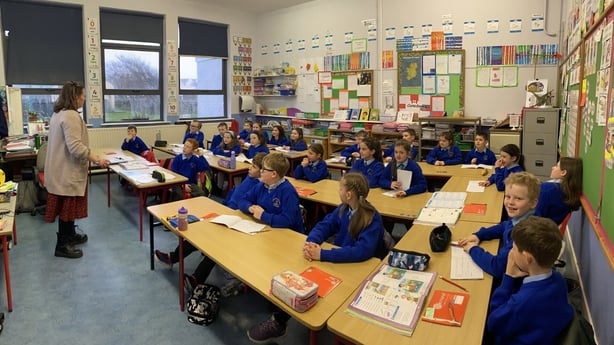
Between these teens tentative steps are being taken towards cultural exchange.
Principal Agnes Hehir outlines how the school is doing all in its power to encourage this.
“We are a small DEIS school in west Clare. We want to welcome these children, and we want to learn from them,” she said.
“If I stay longer here I will learn it,” said another Ukrainian boy, who has been tapping his feet to the set dancing, clearly very absorbed by its rhythms.
The students here are clear on one thing. They all want to go home.
They miss their Ukrainian friends and their own country. But they say they prefer the Irish schooling system to that at home. They say subjects are easier here is, and they seem to really like their teachers.
St Joseph’s has risen to the challenge that arrived at its doors two years ago. Ukrainian Oksana Semenova works in the school teaching English to the refugees. She also forms a crucial connection between the school and Ukrainian parents.
“It is great to be useful,” Oksana said.
“We have 35 Ukrainian students, there are some who are really stressed and it is hard for them to adapt.
“There were some kids who were so homesick that they had to leave and go home.”
Oksana is delighted with the school’s approach. She feels it is the right one for the students, and she feels that her ideas and suggestions are heard.
Oksana began working on a play based on the Trojan wars as a fun way to teach English and to her shock and joy soon that play turned into a full production, performed this summer locally for the wider community.
Doonaha National School has been busy forging links with its parents too. Dina Ostrovkh is a parent representative. Her nine-year-old son Savick attends the school.
“This wonderful land, it helps a lot, no words exist to describe this feeling of gratefulness,” Dina said.
“[Savick] is not only safe he is happy here because of this school. It is such a happy place for the kids. He is happier here than with me because I am under stress always. Here they play, they can afford to be naughty, to be kiddish, to be normal.”
Dina says her stress is “contagious”. Her husband and an older son are both back in Ukraine in an area just bordering the Russian occupied east.
“Every night in our city missiles go there, and hit, and their lives are my fears. I’m dreading that,” she said.
At Doonaha National School, Savick can leave those fears to one side. And he has a special hero; Mr Talty. Whatever Mr Talty says is ‘gospel’, Dina explains.
“My teacher is Mr Talty,” Savick tells RTÉ News.
“He gives us points, for good things that we do, like helping other people.”
There is trauma and loss beneath the smiles of these children and teenagers, but Ireland is helping.
Within the walls of its welcoming classrooms the community on this windswept peninsula is allowing these children to have something approaching a normal childhood.
And in years to come, when they’ve gone home (if they get home) when they are grown up, perhaps the way someone picks up a sweeping brush, or the sound of the sea somewhere, will suddenly send them back to their days in west Clare and the great kindness and accommodation that they received there.

